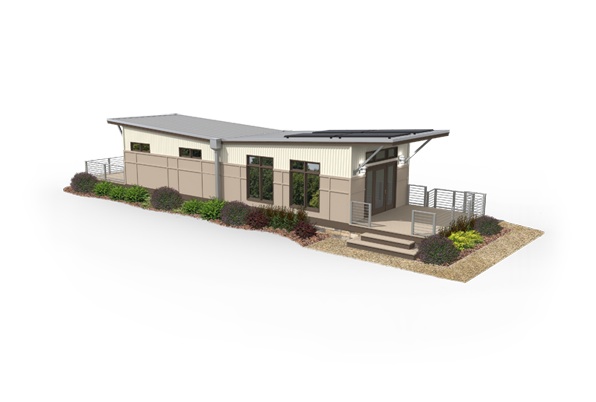
Image Credit: Clayton Homes
Berkshire-Hathaway subsidiary Clayton Homes grabs the spotlight with the introduction of its green (and inexpensive) i-House
How critical is affordability when builders get deep into green construction? One market observer says that, because of our current economic struggles, cost continues to take on an outsized role in the future of green homebuilding.
But Clayton Homes’ recently introduced i-House is an encouraging sign that the “price differential between a green home and one that is not” can be narrowed to the point were the pool of prospective green-home buyers will grow at a significant rate, writes Huffington Post commentator Jonathan A. Schein, CEO of ScheinMedia, which owns MetroGreenBusiness.com, a website for green real estate and business news, and GreenBuildingsJobs.com, a jobs postings site for green and sustainable employment.
“Clayton Homes is moving in a similar direction to Wal-Mart and other large corporations that cater to the middle class, with the embracing of the green era,” Schein says. “The more green and sustainable products that become available to people in all areas of the economic spectrum, the more widespread environmentalism will become.”
Until recently, Clayton, based in Maryville, Tennessee, attracted as much attention for being a subsidiary (since 2003) of Warren Buffett’s Berkshire-Hathaway holding company as it did for its modular homes. But Clayton stepped up its game in recent days with the introduction of the prefab i-House.
The i-House website allows users to explore layout and pricing options, and make inquiries. The base prices range from $74,900 for the i-House I (a 723 sq. ft. 1-bedroom, 1-bath) to $93,300 for the i-House II (a 1,023 sq. ft. 2-bedroom, 1-bath). Options include an integrated porch and a 268 sq. ft. flex room (with one bath) for $29,160.
Standard features include R-21 exterior wall insulation, R-30 roof and floor insulation, low-e windows, dual-flush toilets, no-VOC paint, a butterfly roof with rain collection design, and a high-efficiency heat pump.
Weekly Newsletter
Get building science and energy efficiency advice, plus special offers, in your inbox.














One Comment
Trailer House with a butterfly roof
Still looks like a trailer house to me.
I don't know what is energy effecient about that shape either.
The amount of exterior surface area to floor area is extreme.
The only thing worse is the stand alone flex space.
It might be a good concept if you were trying to waste as much energy as possible.
Heat transfer is a function of surface area.
This concept would make a nice radiator.
Log in or create an account to post a comment.
Sign up Log in